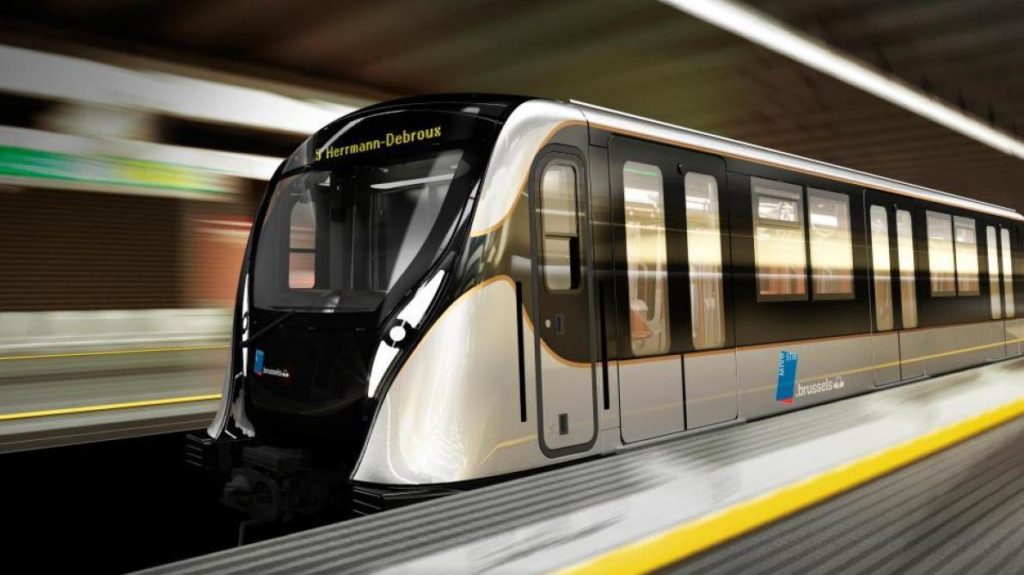The Brussels public transport authority Stib/MIVB has plans to grow its network and improve its fleet and facilities in 2020, according to a look forward to the new year published by L’Echo.
The largest works will concern the creation of the new metro line 3, starting at the existing tram and bus station Albert in St-Gilles/Forest and working its way northwards, tunnelling under the web of railway lines by the North station in Schaerbeek, continuing on to Evere and finally Haren.
Closer to the centre, the new station Toots Thielemans on the Avenue de Stalingrad near the South station will begin construction. That construction does not, however, affect existing traffic.
In February the Stib takes delivery of the first of its M7 metro trains, constructed in Bilbao and coloured silver after a poll of public transport users. The first 22 trains (of a total shipment of 43) will become visible during testing between September and December. The new trams will allow the Stib to increase its frequencies on lines 1 and 5 during peak hours – something that hasn’t been done since 2012. The existing trains on those lines will be shunted over to lines 2 and 6 to achieve similar increases. Frequencies on the latter lines is intended to increase immediately from one train every three minutes to one every two minutes.
On the network’s bus lines, 143 new articulated hybrid buses will contribute to the increase of the fleet and extension of the network. That will include a new line 56 running to Neder-over-Heembeek and a new line 74 from Uccle-Calevoet to Erasmus hospital.
As far as facilities are concerned, the Stib will introduce contactless payment by bank card, bringing to an end the single-use paper tickets now used only by tourists, whose use will be further discouraged by a price increase of 50 cents per voyage. The system will be tested in January and roll out across the network in April-May.
Also in April, the Stib will begin testing a new multi-modal system with the help of 2,000 volunteers. The so-called MAAS (mobility as a service) system will bring together in one application the services of various different providers, ultimately allowing passengers to plan and pay for a journey using a variety of modes of transport including rail, bus and train, share cars, electric scooters and more. The Stib is currently working on identifying which partners, public and private, will take part in the tests.
“This is a major step in the digitalisation of public transport,” Stib CEO Brieuc de Meeus told L’Echo. “After the tests, it will take around two years to develop the definitive MAAS.”
Later in the year, in June arrive the new trams from Bombardier, the TNG or New Generation Trams, which join the fleet on T300 and T400 trams. Renovation works on De Brouckère station begin in July, while works on the Central station metro and Parc station will start, with a timetable of two years to completion. Testing of autonomous shuttle buses takes a major step forward in September on a circuit linking Houba-Brugmann metro with the Brugmann hospital site.
Alan Hope
The Brussels Times

